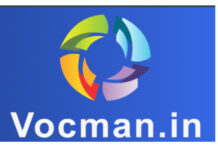As energy costs continue to rise, concerns over water availability deepen, and regulatory pressures mount, industries across India are turning to smart pumping solutions to enhance operational efficiency and reduce electricity consumption. The convergence of digital innovation and energy optimisation is reshaping how industrial units and agricultural operations manage their pumping systems — a key area of energy demand.
Pumping systems are among the largest consumers of electricity globally, accounting for nearly 27% of energy use. In the Indian context, their role is especially prominent. In the industrial sector alone, pumps are estimated to consume approximately 40% of the electricity used by the sector, which translates to about 18% of the nation’s total electricity consumption. This heavy reliance underscores the critical function of pumps in maintaining continuous industrial activity, while also highlighting the urgent need for interventions that promote energy efficiency.
The agricultural sector, which provided employment to around 46% of India’s workforce during the financial year 2022–23 — nearly double that of the industrial sector’s 25% — is similarly dependent on pump sets. According to data posted by the Ministry of Power on 9th October 2015, over 20 million agricultural pump sets are in operation across the country, contributing to an estimated 20–22% of India’s total electricity usage. The scale of this dependence makes the sector a prime candidate for smart pumping interventions, particularly in light of mounting challenges in water resource management.
To address these challenges, industries are increasingly adopting advanced technologies such as Variable Frequency Drives (VFDs) and Internet of Things (IoT)-enabled systems. These innovations allow for real-time monitoring, predictive maintenance, and data-driven decision-making, significantly reducing unplanned downtime and improving overall equipment reliability. The integration of IoT-enabled sensors, in particular, is enabling operators to detect faults early and implement timely corrective measures, thereby maintaining productivity while cutting energy costs.
“Smart pumping systems offer industries better control over operations and energy use,” said Chandrashekhar Thakurdesai, Associate Vice President and Head – Industry, Wilo Mather & Platt. “By adopting data-driven systems, industries can detect faults early and take corrective action before breakdowns occur.”
In a concerted effort to align with global standards, Indian pump manufacturers are engaging in active collaborations with research institutions. These partnerships are facilitating the development of systems that are not only tailored to the country’s domestic needs but also meet international efficiency and performance benchmarks. Such advancements are aligned with the Government of India’s commitment to promoting cleaner, more sustainable industrial practices and lowering carbon emissions.
“Close collaboration with policymakers ensures that product development stays aligned with changing standards,” Thakurdesai added. “This helps manufacturers remain compliant and contribute to broader sustainability goals.”
Energy audits are playing an increasingly important role in helping industries identify inefficiencies in their pumping operations. These assessments, supported by government initiatives and stricter regulatory norms, are proving instrumental in guiding companies toward cost-saving and environmentally responsible choices. In addition, policy discussions are currently underway to introduce new subsidies and tax incentives to further accelerate the adoption of smart pumping technologies.




















